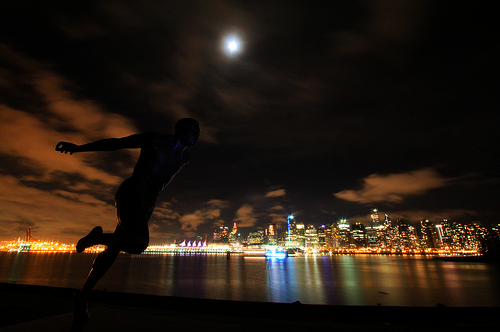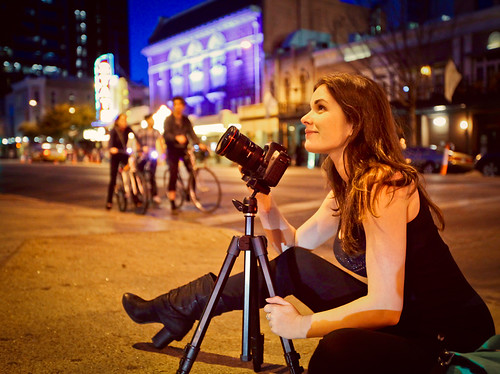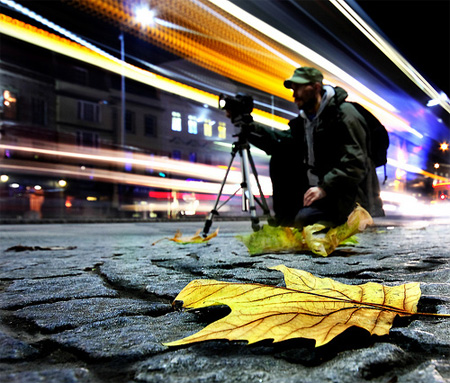Photographers who have photographed at night include Bill Brandt who photographed the Second World War and post-War England; and Lee Miller, also a World War II photographer whose work included a famous night image of the burning of Hitler's house. Ansel Adams is also well-known for his photograph "Moonrise Over Hernandez" which was shot by moonlight.
 What are our tools in night photography?
What are our tools in night photography?1. Tripod. While not always necessary (see further on for how to cheat on this), a tripod will give you the greatest flexibility to get the angles you need while keeping your camera steady for those long exposures.
2. Wide-angle lenses. This is a personal preference, but I love the way they work in night photography. I use Canon’s 10-22mm f/3.5-4.5 ($700), but if you can afford it I’d get the Canon 16-35mm f/2.8L II ($1300). If both of these are out of your price range – don’t worry! Try it out with whatever you’ve got as the only thing that will limit you is your imagination.
3. A lens hood. To minimize lens flares from light entering at angles outside of your frame.
4. A flashlight. Sometimes you’ll want to draw attention to or simply lighten up an important part of the foreground which is too dark.
 5. Our imagination. Tools lie all around us in everyday objects to help us make our work better in this; I’ve used bicycle lamps, lampposts and newspaper boxes to get it done.
5. Our imagination. Tools lie all around us in everyday objects to help us make our work better in this; I’ve used bicycle lamps, lampposts and newspaper boxes to get it done.Night photography has become a huge hobby of mine, and I enjoy all of its facets, from taking photos of city lights, abandoned eerie and spooky places bathed in moonlight, and even remote desert and mountain landscapes where there is a complete lack of light pollution during the hours of darkness. Successful night photography takes above all a high degree of patience, and mine has been tested many times. However, I feel the enjoyment and relaxation it gives me, and the surreal quality of the photos it can generate make it well worth it, so I have prepared the following tips so that others new to the practice may get a better head start.
Night Photography Tips: 9 essential steps for beginners
Night Photography Tip 1: Get high quality night shots
Night Photography Tip 2: Use a tripod for sharp pictures
Night Photography Tip 3: Pick your night photography locations in advance
Night Photography Tip 4: Use the lens sweet spot
Night Photography Tip 5: Night photography settings
Night Photography Tip 6: How to get a ‘starburst’ effect on street lights
Night Photography Tip 7: Composition at night
Night Photography Tip 8: Use Mirror Lock-up
Night Photography Tip 9: Don’t touch your camera!
These Night Photography Tips will enable all
photgraphers to shoot stunning evening images. Many compact digital
cameras and even some higher end cameras will have a night time setting
to allow you to take shots after dark.
However to really be able to capture truly stunning night
time photography you will need to have a SLR camera and a solid tripod
which will enable you to have total control over the camera which is
necessary to cope with the low light conditions.












No comments:
Post a Comment